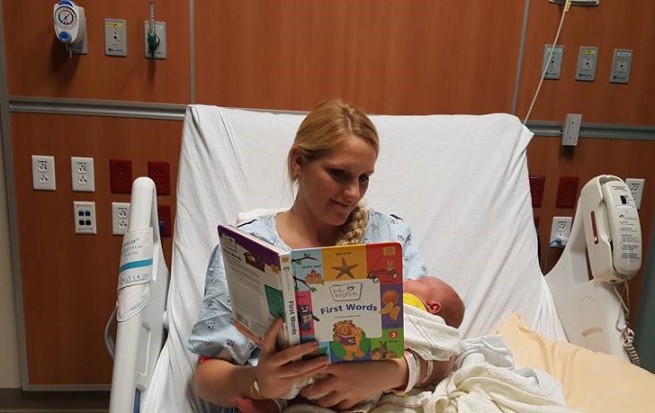It is never too early to start reading to your children.

This summer has been a busy one at our house! We welcomed our third (and final) addition to our home, a bouncing baby boy weighing in at 10 pounds and 9 ounces (pictured here). Hence my lack of posts this summer! This one will be a quick thought between feedings and naps!
Think back to some of your fondest childhood memories – did they include books? Libraries? Reading with your parents, siblings, or friends? For many, books create lasting memories between children and their care givers and teachers. Share these memories with your own children or your students to get them thinking about their best reading memories.
When we read to our children and students, keep in mind these 3 easy tips:
- Use funny voices. My youngest daughter is hooked on a robot book right now. She loves that mommy (i.e. Me!) reads the dialogue in the book between the Mommy Robot and the Baby Robot in silly robot voices. This can be easy to do with our own children at home, but even when reading aloud to our students pulling out these funny voices (no matter how silly we feel doing it) will create lasting memories for them.
- Re-read the same books. Let me guess, you already do this!? Yep, our kids get stuck on specific books and want to hear them over and over again! Well, this is actually a good thing. This repeated reading allows our kiddos to start the earliest of emergent reading – knowing what is coming next and even ‘reading’ the story back to us. It gives them an early sense of confidence in their reading ability – one that teachers want them to continue to have.
- Help your child/student connect to the story. I will mention text-to-self connections over and over again in my posts. I cannot express the importance of making connections while reading enough. When your child/student feels connected to the story their engagement and comprehension increase tremendously. It can be as simple as reading a story about a dog and comparing the dog in the story to your child’s pet or reading a story about the ocean and comparing the events to your family’s ocean vacation.
These simple steps may be strategies we are already instilling in our children, if not, they are easy to add to our daily reading rituals! Give them a try!
If you are enjoying reading these posts, please share my blog with others who value reading as much as we all do!
Happy Reading!
Dr. Precise
